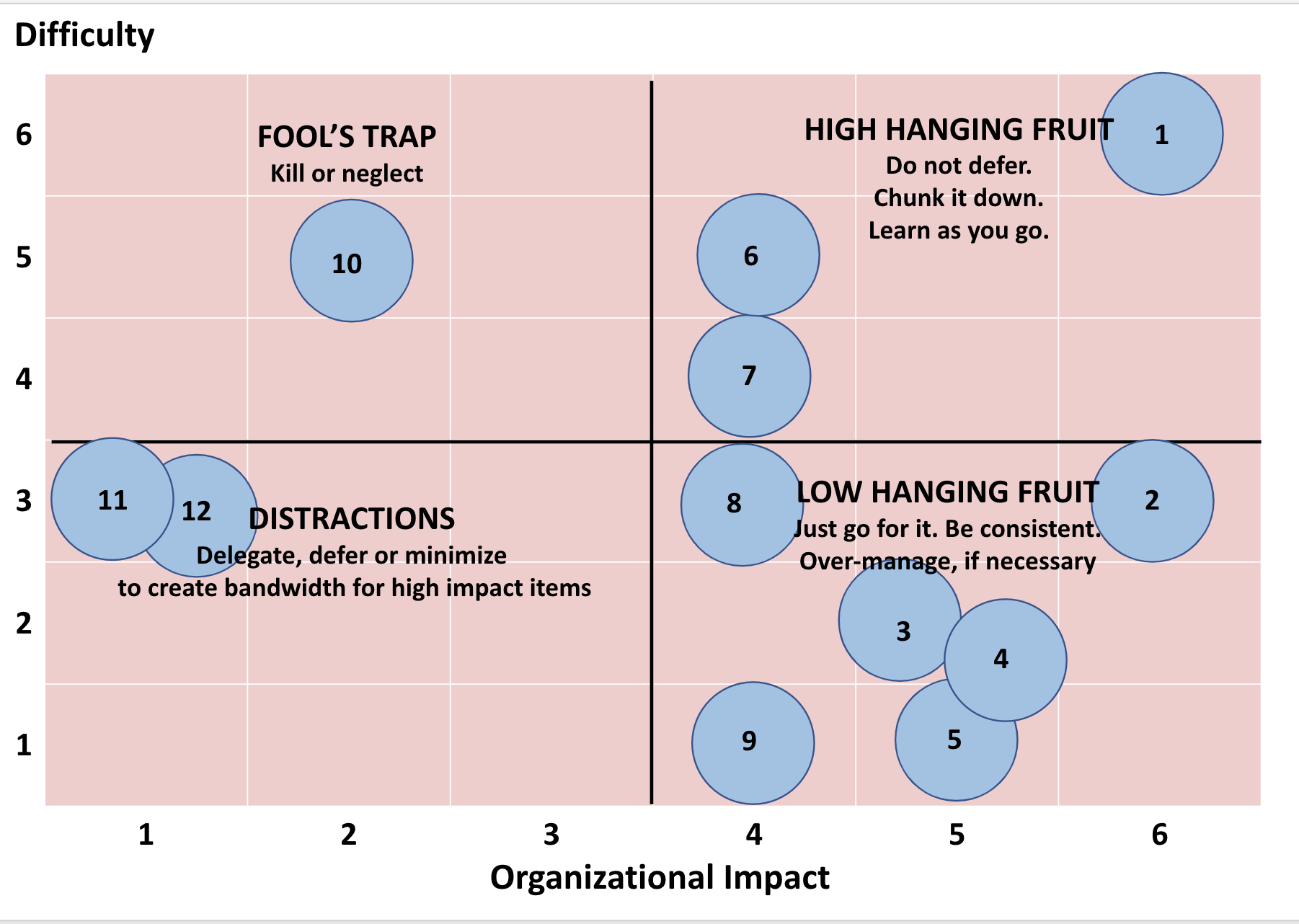Prioritize the Issues
A priority grid contains two axes where one represents impact and the other difficulty.
Impact measures the improvement in organization performance resulting from a defined shift in a given area; for example, making the right decisions in entering Market X, or increasing trust and engagement in the leadership of the sales force.
Difficult considers the time requirements and uncertainty in achieving required behavioral shifts (if any), the magnitude of the resources involved and the uniqueness of any skills that may be required.
In the Accelerator approach, the senior team is tasked with creating their priority grid (during a session facilitated by Tom). Ranking problems and opportunities relative to each other requires a set of future-oriented conversations based upon logic and transparency. The benefits of the process include
Heightened commitment to tackle important challenges outside of the team’s comfort zone (high hanging fruit)
Alignment around the obvious must-dos (low hanging fruit)
Greater visibility to the tempting distractions to the most important work (distractions)
An ability to reorient from firefighting more quickly (fool’s trap)

Note: Refer to the case example for the specific issues portrayed in this grid.